VULGAR CERAMICS
Canberra's Female Ceramic Pioneers
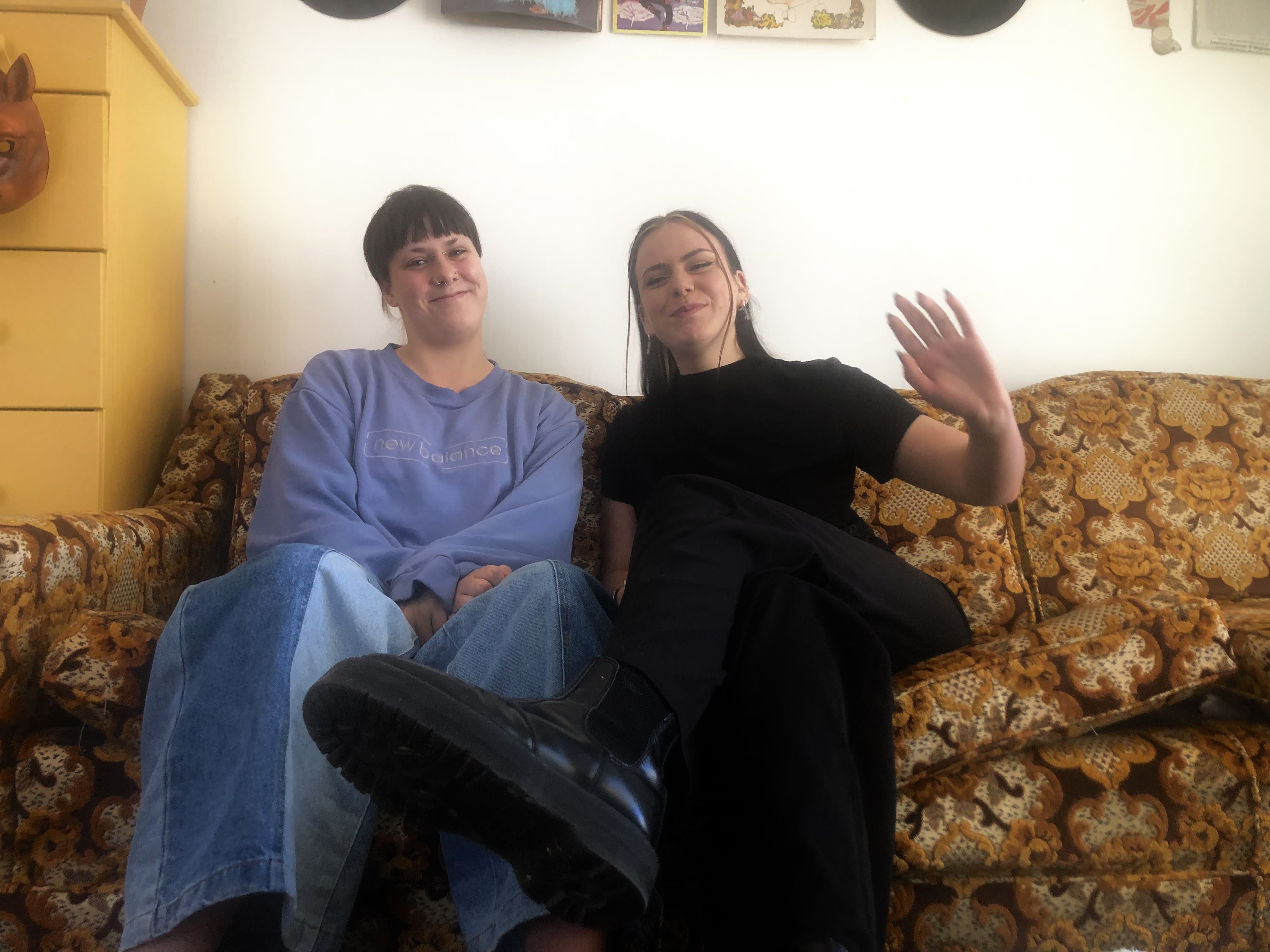
What the heck is Vulgar Ceramics?
At first glance, Elspeth 'Eppie' Rowell and Emma Crocker's home looks like your typical share house, with vintage couches, makeshift plant homes and walls decorated with posters and op-shop art.
However, living within the empty space is a visualisation of the duo's talent and creativity. Pots, plates, vases, ashtrays (you name it, they've probably made it!) frolic throughout the living room; their work is a ceramic dance of multidisciplinary techniques. Graffiti sketches and delicate hand paintings embed themselves throughout their work. Mushrooms, strawberries, crawly critters, "fuck you", "love you", cow print, lines that are squiggly and wobbly in all the right places.
You can't help but be intrigued by this mostly self-taught creative powerhouse. Whether it's the fact that their pots make the word 'piss' a work of art or that they unapologetically suggest to "eat my ass" on a plate designed for your morning toast, or their handcrafted wine glasses that facilitate a midnight swig of blood (if that's your thing), the end result is those of us who don't have an artistic bone in our bodies look on with humble adoration.
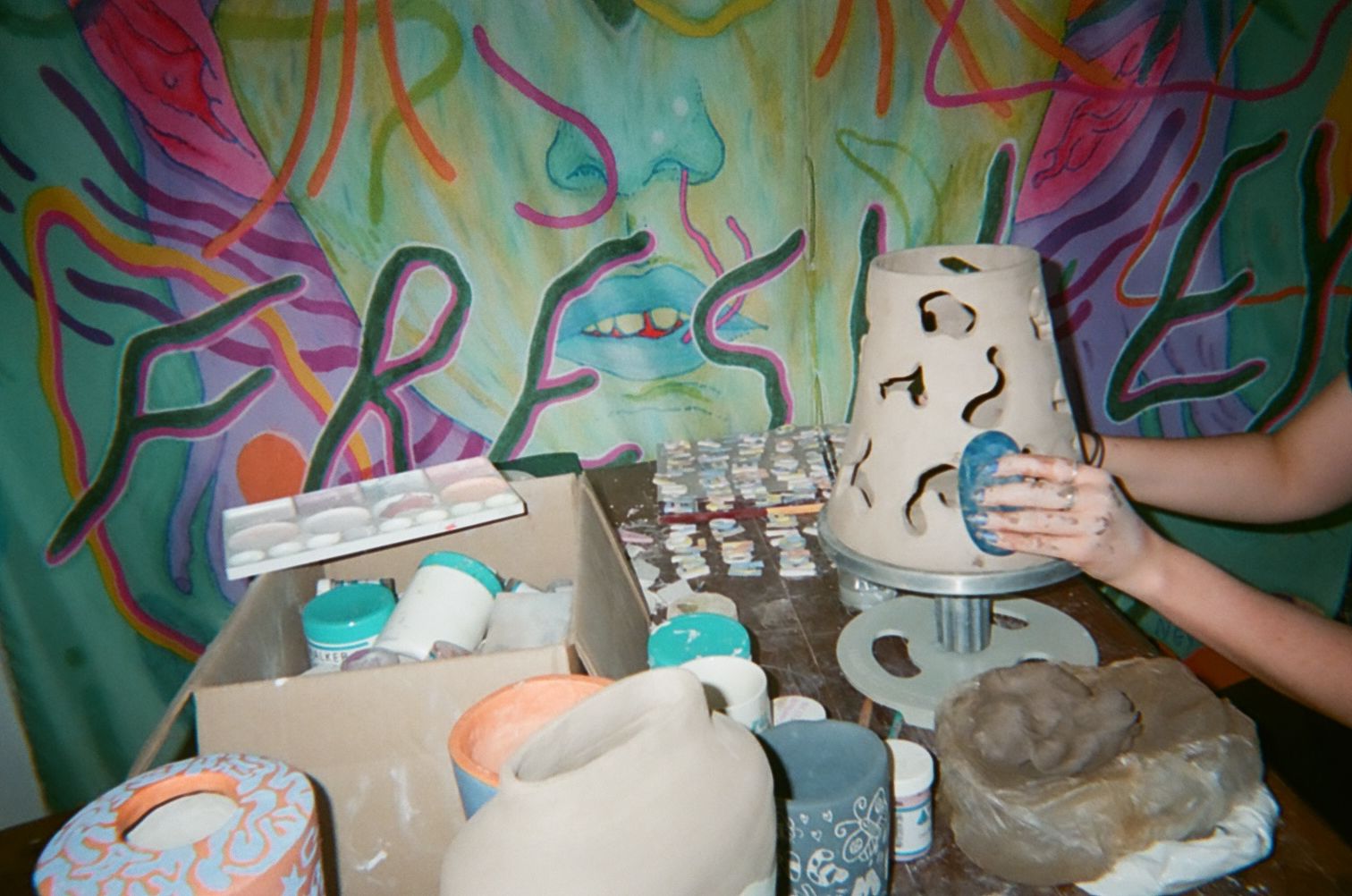
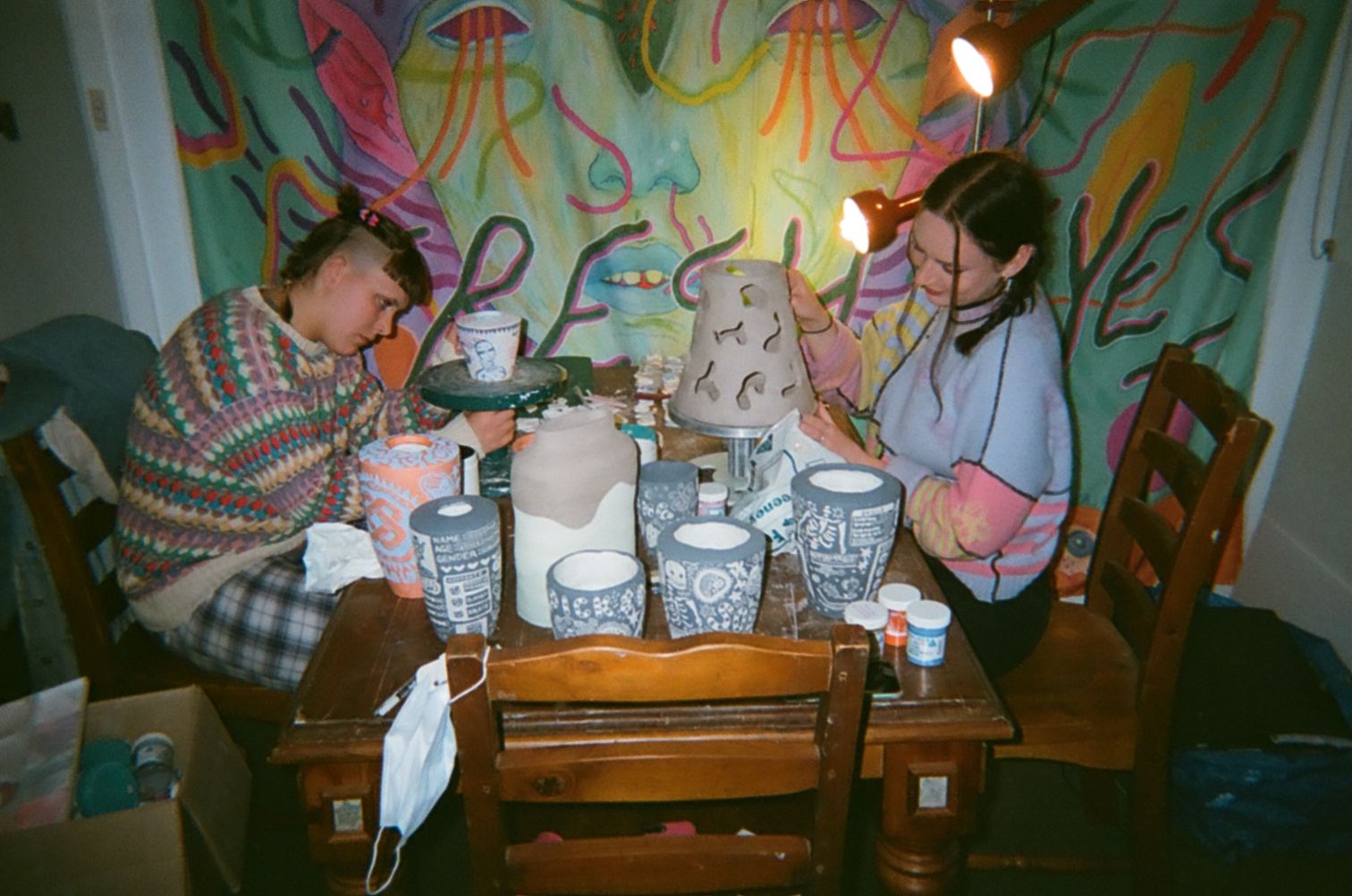
A long history short:
The art of ceramics emerged many moons ago (28,000 BCE to be exact), when the piece 'Venus of Dolní Věstonice', was made, making an image of a faceless woman one of the first times clay metamorphosed into art.
Pottery emerged in Eastern Asia thousands of years later, spreading quickly to the Middle East and Europe, where functional vessels became tools for storing water, and food, creating bricks and forming tiles.
Around 3,500 BCE, pottery was revolutionised with the invention of the wheel; artefacts could now be produced with radial symmetry. Ceramics continued to evolve and transform into the realms of high-end art and the mass-produced items that we encounter in our everyday lives.
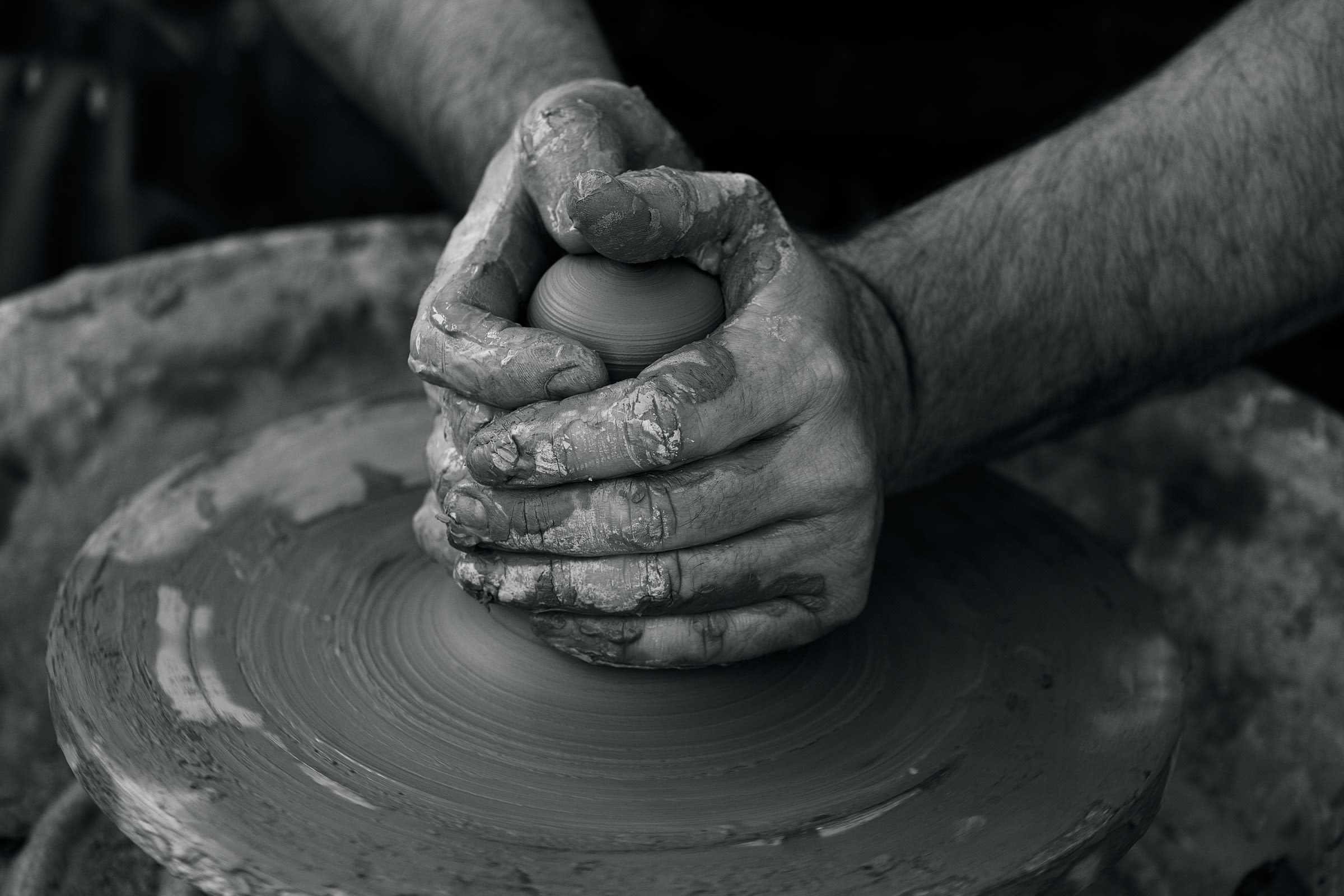
Humble beginnings:
It wasn’t until 2020 that Vulgar Ceramics was born. These kindred spirits had no intention of morphing their creative forces into a working, artistic collaboration. That is until, after a ceramics class at ANU, Eppie fell in love with the craft and brought home a 10kg bag of clay.
Emily, who is currently studying international relations and public policy at ANU, had never taken an art class before, but very quickly mirrored Eppie’s passion. The two working in symbiosis to discover the complicated and exciting world of Ceramics.
“So, I brought home a bag of clay, and I was like 'Emma, look at this.' And then we immediately got obsessed.”
They quickly started creating, using this art form as a tool for experimentation, self-expression, and a mechanism to temper emotions. Call it an act by the ceramic gods, but the pandemic manifested an environment where they both had the opportunity to focus on nothing but honing their craft.
"It was like the end of 2020, and Covid was not ideal, so we really found that during lockdown it gave us something to do. And we see a lot of stuff online; there has been a rise in Ceramics, everyone is making pots out of air-dry clay, and we thought, oh, we can do this. So, we started messing around with clay. It was mostly just experimentational.”
The lack of ceramic classes and limited recourses did not deter the creative duo from utilising their skills in other areas to create unique pieces of work.
"I do a lot of illustrations, and Emma really likes watercolours and painting. So, I think if you look at our earlier stuff, the clay bodies are not really that defined. We just kind of made stuff so we could paint it; we learnt from applying what we already knew and tried to put that in the scope of ceramics."
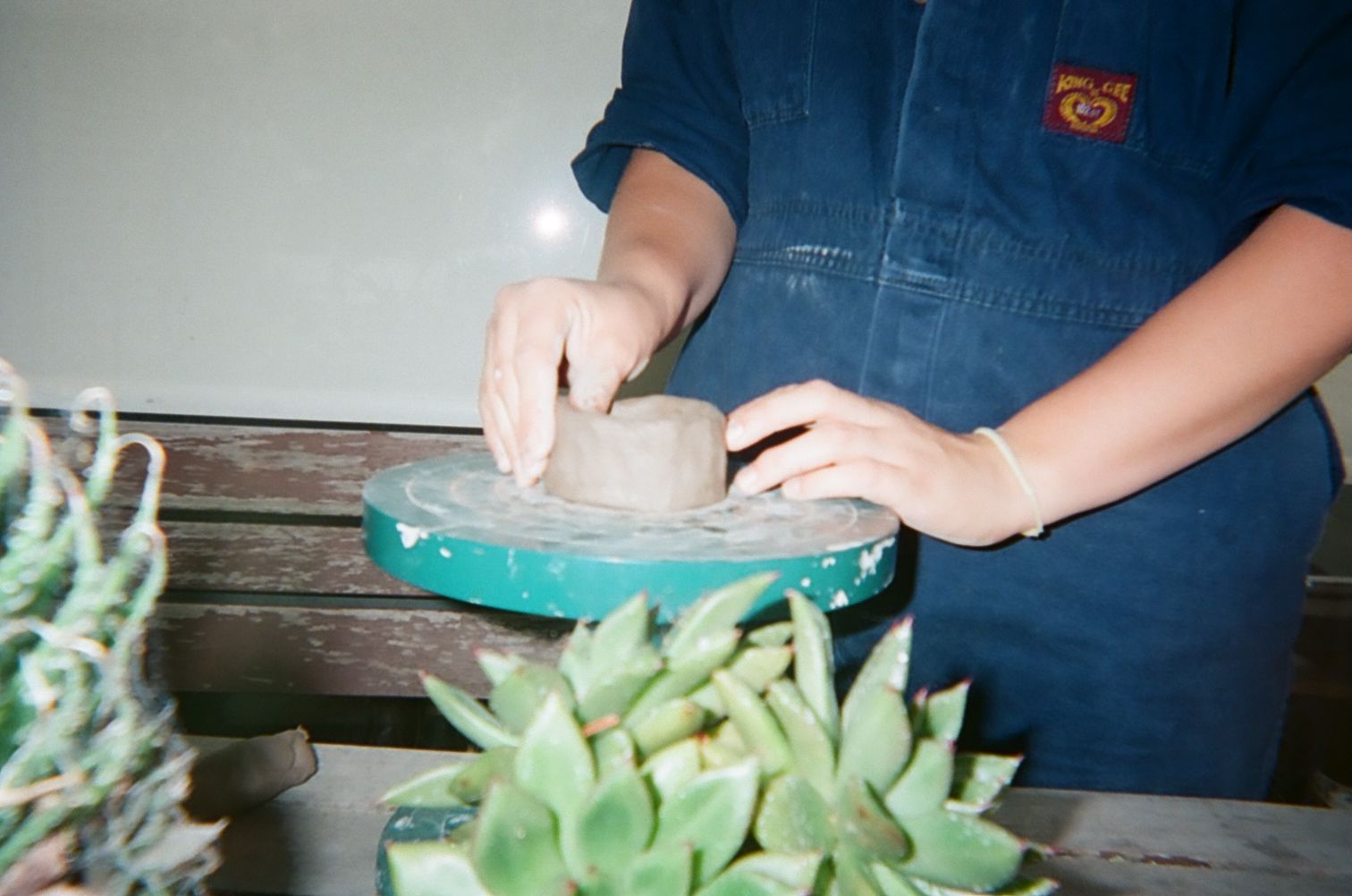
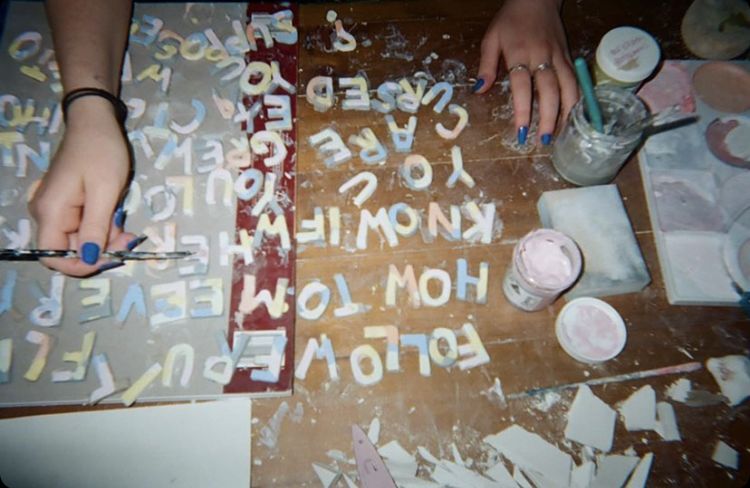
Prepare the horses!
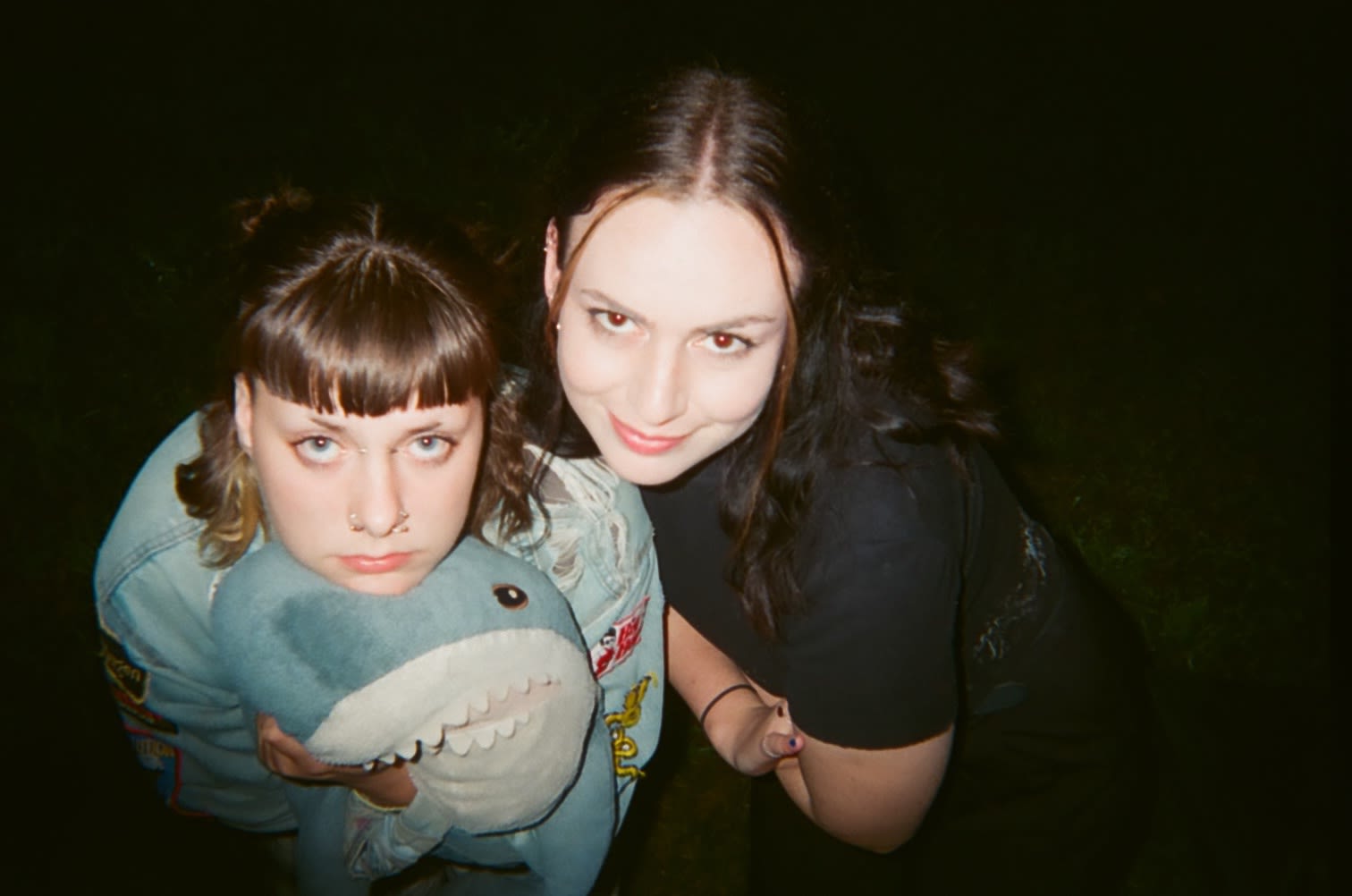
A challenge that I’m sure so many young women (women in general) have faced is the idea that they are inherently not good enough, smart enough or talented enough to achieve their dreams; the dark shadow of self-doubt that painfully lingers in the back of our brains, ready to strike as soon as you want something really badly.
Vulgar Ceramics are by no means immune to this, but their exhibition at the Tuggeranong arts centre was a call to the cavalry. The war against this toxic little voice had begun, a powerful gesture to all female artists that the impossible, is actually very much possible if you put yourself out there.
‘Secure Escapes’ is Vulgar Ceramics first exhibition held at the Tuggeranong Arts Centre. Despite their tough competition and the large volume of applications, they were accepted for the big room.
“I think a big thing for us starting ceramics is not assuming things are too far out of reach; we will find a way to figure things out. We have just been trying to not limit ourselves by our thoughts that we wouldn’t be able to do things. Like we definitely didn’t think that we would get the exhibition.”
Secure Escapes visualises the unity of their different styles. Emma’s aesthetic eye and natural affinity to storytelling intermingled with Eppie’s visceral Graffiti sketching, a powerful documentation of living in a share house during the pandemic was created.
While these talented females make creating a body of work and curating their first exhibition seem as easy as memorising a cornflake recipe, there’s an almost oxymoronic feeling within their process. Pessimism intertangled with empowerment.
"Omg it was so hard, trying to figure out what to do. And we have obviously never done anything like that before, like neither of us have any experience in like curation. We kind of expected things to go wrong, like what if the kiln exploded the day before the pieces were due? And everything will break, and it will be a disaster. And it was shocking to me when nothing broke and everything we needed we got.” - From the Exhibition
Sometimes the horses need a minute before they go to battle.
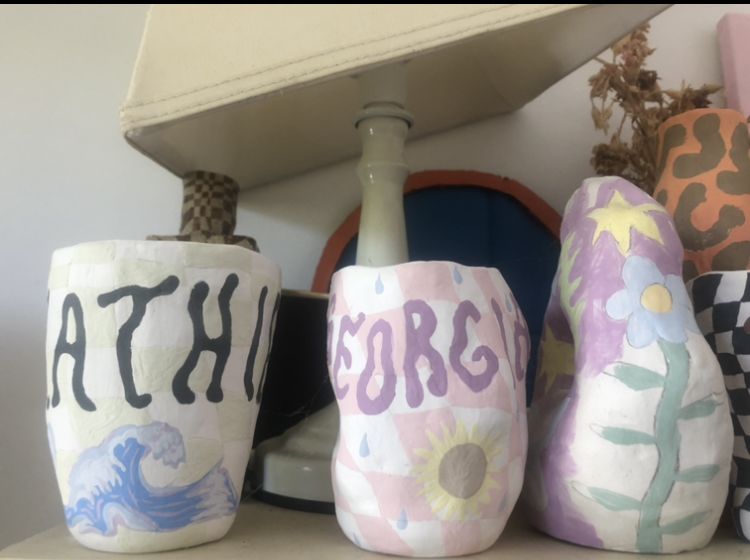
Piss is an inappropriate word
For these two young artists, another major challenge that they have faced is integrating within the pre-established ceramics community in Canberra. Despite Canberra’s vibrant art world, the ceramics community is relatively niche, comprised of an older demographic.
Emily and Eppie describe the only firing service in Canberra as an “institution,” wary of younger artists.
Using the grant money from the Tuggeranong exhibition, the Vulgar Ceramics team hope to change this and make Pottery more accessible to young people.
"Some of my works were too inappropriate for (Canberra firing service) to fire, apparently, because some of my work said the word piss. So, we just want a more open and inclusive environment for young people to make work."
Their first investment will be a kiln, an essential tool used to heat and transform clay. This device will increase accessibility for young people, becoming a symbol of unity for a community that shares a passion for self-expression through ceramics.
“We want to teach people and pass on the knowledge about stuff that we have just worked out, like what kind of clay we use, and what temperatures stuff get fired at, and how to use underglazes. And if we can, like, help other people get started, and let them to fire in our kiln, that would be really epic.”
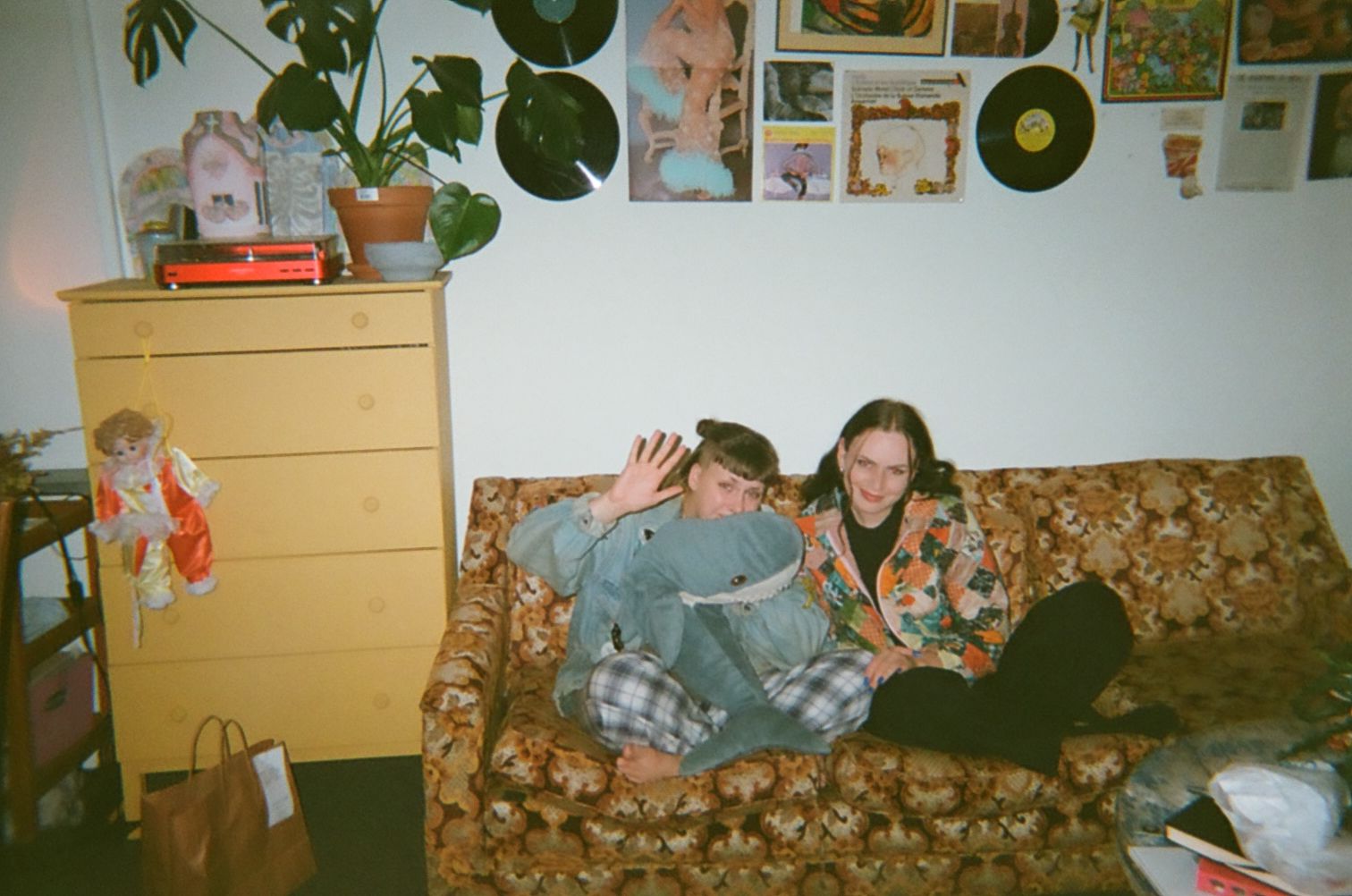
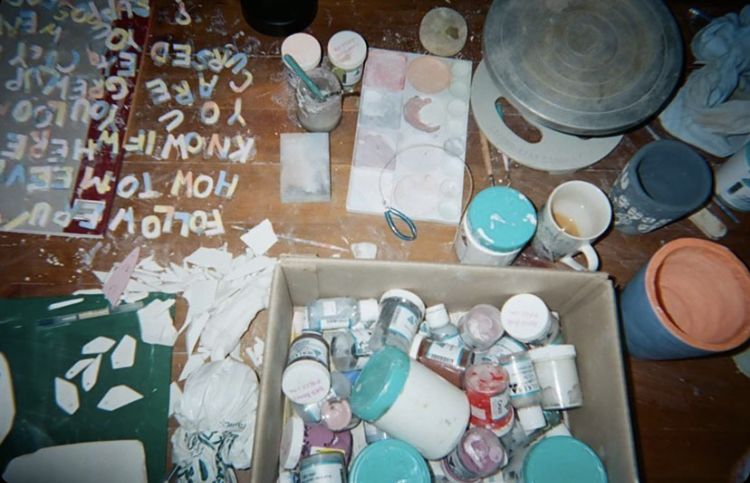
The Future of Vulgar Ceramics
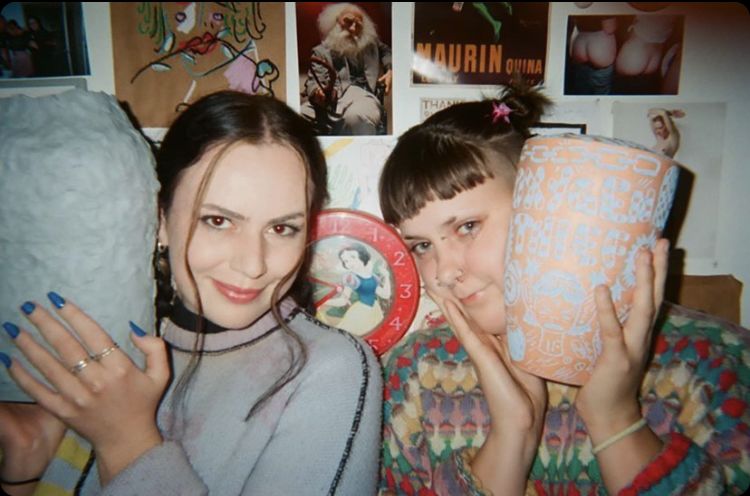
Despite Vulgar Ceramics' large Instagram following, they are very clear that the trajectory of their brand is embedded in the foundation of art and expanding their name through the local community as opposed to the realms of the internet.
“Instagram has been great, it’s really nice to talk to people that aren’t in Canberra and they can talk to us, but I think what we have found that the best way to sell or show work, is starting locally.”
While Vulgar Ceramics can be seen as a reflection of modern society, its roots are very much embedded in Venus of Dolní Věstonice. Where the mud that sits near where the river flows came into the hands of an artist. Where this muddy, mineral-infused clay transformed into a lady with no face and big breasts. Their humble beginnings, a love note to the simplicity of ceramics that existed in 28,000 BCE and the future of Pottery in Canberra.
Let us rejoice in a moment of dignified silence for female creativity.
Original Photos by Elaine Obran, Elspeth Rowell and Emma Crocker
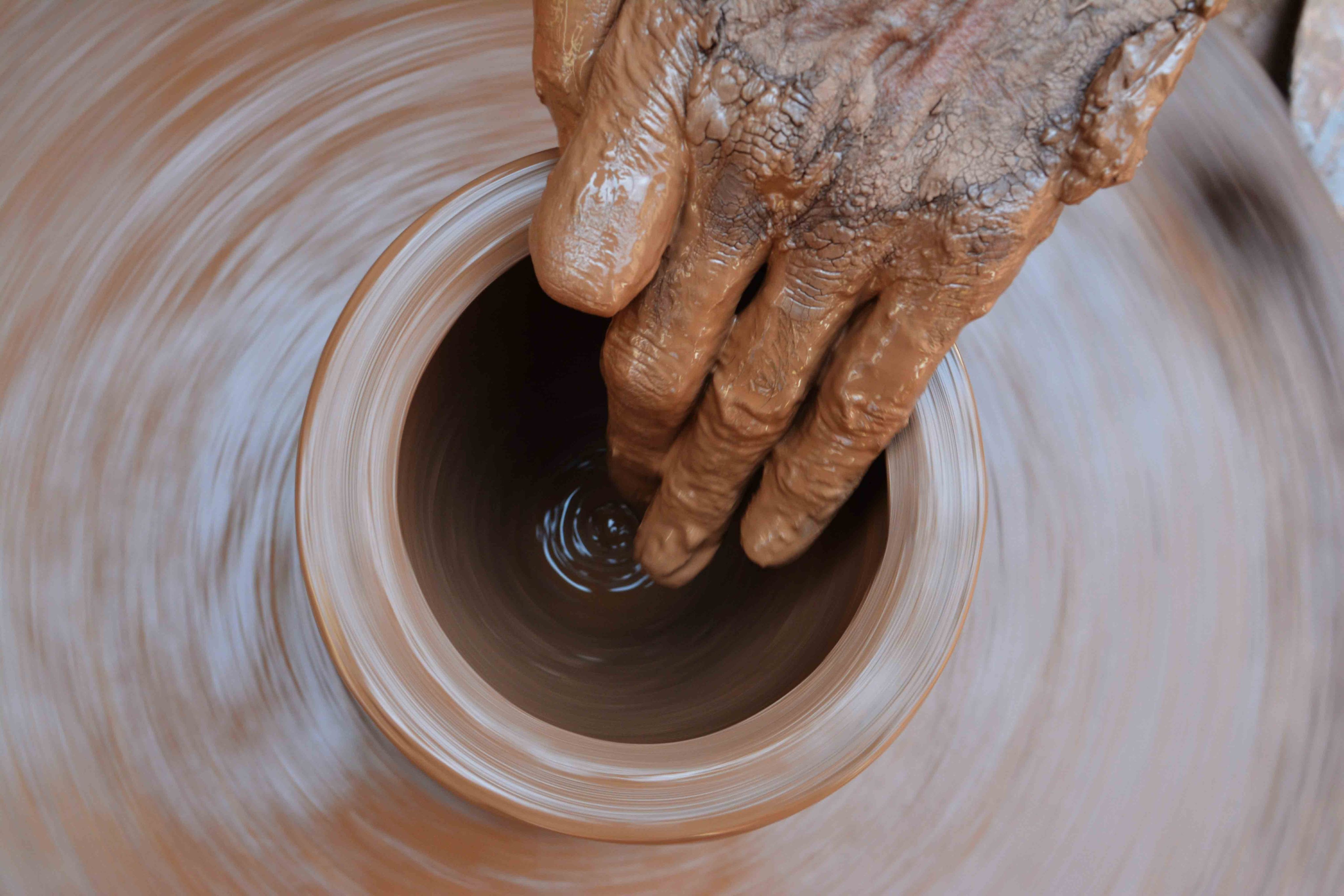
Photo by ritesh singh on Unsplash
Produced by Journalism and Sports Media students;
Published by the Faculty of Arts and Design, University of Canberra

